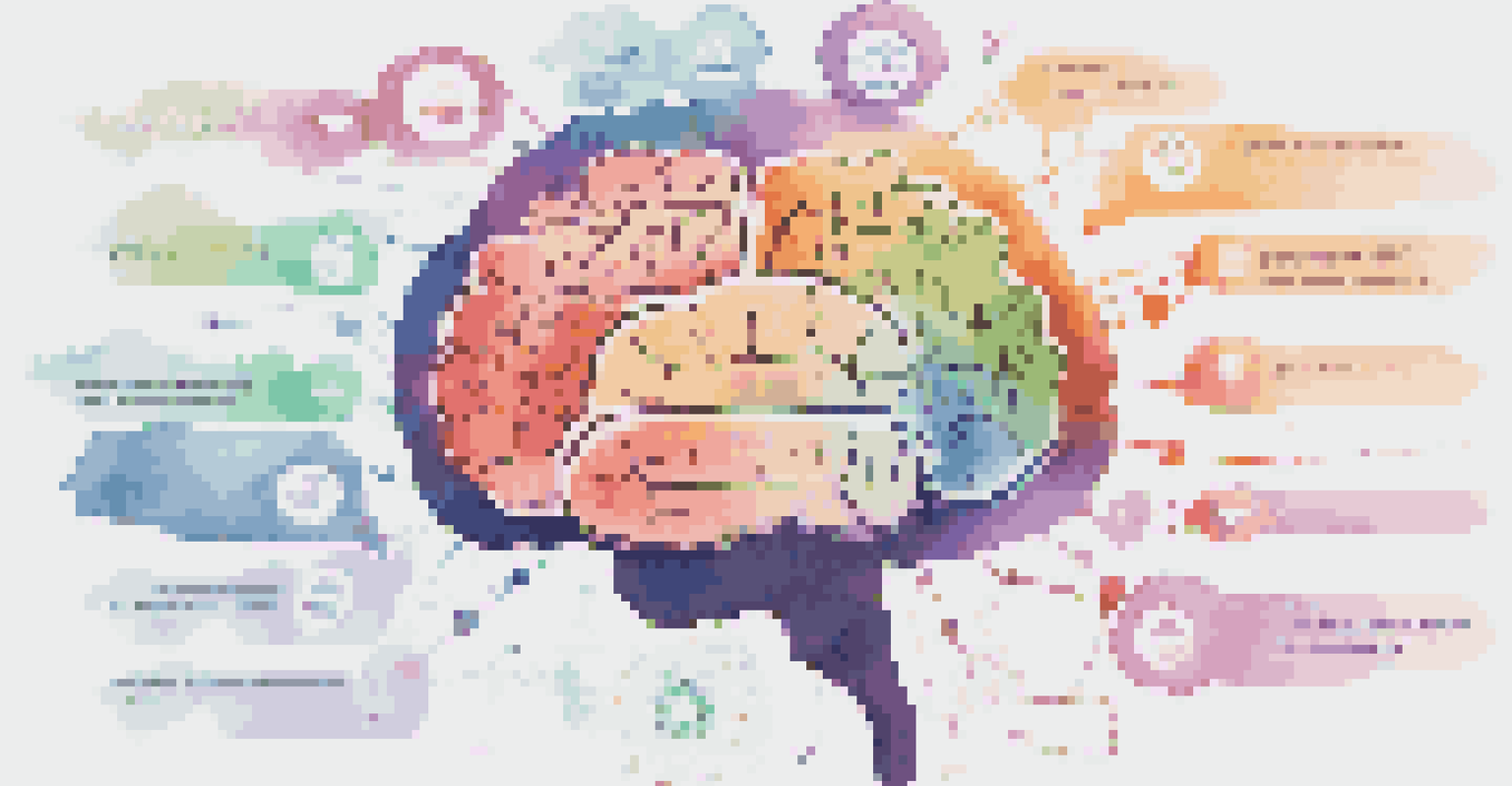Neuroscience-Driven Strategies for Enhancing Online Learning

Understanding the Brain's Role in Learning Online
To effectively enhance online learning, it's essential to understand how the brain processes information. Neuroscience reveals that different regions of the brain are activated during various learning activities, impacting retention and comprehension. For instance, the hippocampus plays a crucial role in forming new memories, which is vital for absorbing online content.
Tell me and I forget, teach me and I remember, involve me and I learn.
Additionally, emotional engagement is key to learning success. The amygdala, which processes emotions, can either enhance or hinder learning based on a learner's emotional state. Creating a positive online environment can help stimulate this part of the brain, making lessons more impactful and memorable.
By harnessing these insights, educators can design online learning experiences that align with how our brains naturally learn. This understanding paves the way for strategies that cater to different cognitive processes, ultimately leading to more effective online education.
The Power of Active Learning Techniques
Active learning techniques engage students more deeply than traditional passive learning. Neuroscience suggests that when learners actively participate, they are more likely to retain information. Techniques such as quizzes, discussions, and group projects stimulate brain activity, reinforcing learning pathways.

For example, incorporating interactive elements like polls or breakout rooms in online classes can foster collaboration and critical thinking. These methods not only make learning enjoyable but also encourage learners to take ownership of their education, which can lead to better outcomes.
Brain Engagement Boosts Learning
Understanding how different brain regions are activated during learning can help educators create more effective online experiences.
Ultimately, the more students are involved in their learning process, the more likely they are to remember and apply what they’ve learned. By integrating active learning strategies into online platforms, educators can create a more dynamic and effective learning environment.
Leveraging Spaced Repetition for Long-Term Retention
Spaced repetition is a technique grounded in neuroscience that helps improve long-term memory retention. Instead of cramming information all at once, this strategy involves revisiting material at increasing intervals, allowing the brain to strengthen its neural connections. This can be particularly advantageous in online learning settings.
The mind is not a vessel to be filled, but a fire to be kindled.
Incorporating spaced repetition into online courses can take many forms, such as scheduling review sessions or utilizing flashcard apps that remind learners to revisit concepts over time. This method not only enhances recall but also helps solidify knowledge in a way that’s easier to access later.
By adopting spaced repetition, educators can provide students with a powerful tool for mastering complex subjects. This approach aligns with how our brains naturally learn and can lead to a more profound understanding of the material.
Gamification: Making Learning Fun and Engaging
Gamification introduces game-like elements to the learning process, tapping into our brain's reward systems. By incorporating points, badges, or leaderboards, educators can encourage participation and motivate students to engage with the material. This approach not only makes learning more enjoyable but also increases retention rates.
For instance, online platforms that use gamification techniques can transform mundane tasks into exciting challenges. When learners see their progress represented in tangible ways, it can boost their motivation and commitment to the course.
Active Learning Enhances Retention
Incorporating active learning techniques like quizzes and discussions increases student engagement and improves information retention.
Ultimately, gamification leverages the neuroscience of rewards to create a more stimulating learning environment. By appealing to our natural desire for achievement, educators can foster a culture of engagement that benefits all learners.
Fostering a Growth Mindset in Online Learning
A growth mindset, the belief that abilities can be developed through dedication and hard work, is crucial for effective learning. Neuroscience shows that this mindset can lead to increased brain plasticity, enabling learners to adapt and grow from challenges. Encouraging students to embrace this philosophy can enhance their online learning experiences.
Educators can foster a growth mindset by providing constructive feedback, celebrating effort over perfection, and encouraging resilience in the face of setbacks. This creates an atmosphere where learners feel safe to explore new ideas and take risks, which is essential for deep learning.
By promoting a growth mindset, online educators can help students unlock their full potential. This approach not only supports academic success but also nurtures lifelong learning habits that extend beyond the classroom.
Utilizing Multisensory Learning Approaches
Multisensory learning engages multiple senses to enhance the absorption of information. Neuroscience supports the idea that using sight, sound, and touch can create stronger memory connections. In an online context, integrating videos, podcasts, and interactive simulations can cater to different learning styles.
For example, a lesson on biology could include a video demonstration, an infographic, and a virtual lab simulation. This variety can cater to visual, auditory, and kinesthetic learners alike, making the content more accessible and engaging for everyone.
Community Supports Online Learning
Building a supportive online learning community fosters motivation and deeper connections, enhancing the overall educational experience.
By incorporating multisensory approaches, educators can create a rich learning experience that resonates with a broader audience. This strategy not only makes learning more enjoyable but also improves the likelihood of knowledge retention.
Creating a Supportive Online Learning Community
A supportive learning community can significantly enhance the online learning experience. Neuroscience highlights the importance of social connections in motivation and engagement, suggesting that students thrive when they feel part of a community. Building connections among learners can lead to richer discussions and collaborative learning.
Educators can cultivate a sense of community by facilitating discussions, encouraging peer feedback, and creating group projects. These interactions not only enhance learning but also foster relationships that can be beneficial for students’ emotional well-being.

By prioritizing community in online learning environments, educators can create a space where students feel valued and engaged. This sense of belonging can lead to increased motivation and ultimately, better learning outcomes.